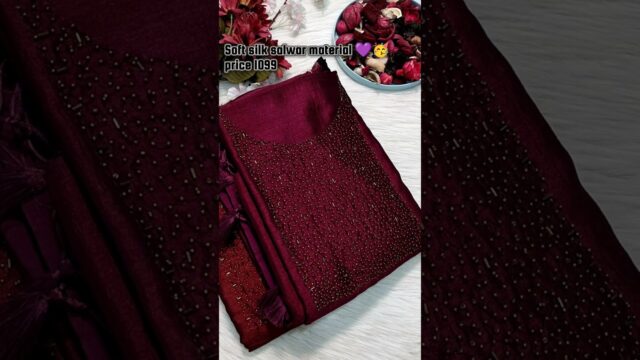Embroidering on Lightweight Knits Tips From the Experts 2018 2 14 19
167KEmbroidering on lightweight knits can be a tricky task, but with the right tips and techniques, you can achieve beautiful results. In this video, I will share some expert advice on how to embroider on lightweight knits and create stunning designs. Whether you are a beginner or a seasoned embroiderer, these tips will help you take your embroidery skills to the next level.
One of the most important things to consider when embroidering on lightweight knits is the type of fabric you are working with. Lightweight knits can be delicate and stretchy, so it is essential to choose the right stabilizer to support the fabric and prevent puckering. A tear-away stabilizer is a great option for lightweight knits, as it provides stability without adding too much bulk.
Before you begin embroidering, it is important to prepare your fabric properly. Make sure to wash and dry your lightweight knit fabric before starting your embroidery project, as this will help to remove any shrinkage and ensure that your design stays in place. Additionally, use a hoop to secure your fabric in place and prevent any stretching or distortion during the embroidery process.
When it comes to choosing the right embroidery design for lightweight knits, it is important to consider the density and size of the design. Lightweight knits can be more delicate than other fabrics, so it is best to choose a design that is not too dense or intricate. Opt for simpler designs with fewer stitches to prevent the fabric from becoming too stiff or bulky.
When embroidering on lightweight knits, it is important to use the right type of needle for the job. A sharp or ballpoint needle is ideal for lightweight knits, as it will help to prevent snags and pulls in the fabric. Make sure to use a needle that is appropriate for the weight and type of fabric you are working with to ensure smooth and even stitching.
Another important tip for embroidering on lightweight knits is to use the correct thread for the job. Choose a lightweight or fine thread that matches the weight and color of your fabric, as this will help to prevent any puckering or distortion in your design. Additionally, consider using a bobbin thread that matches the top thread, as this will help to create a more seamless and professional finish.
One of the key techniques for embroidering on lightweight knits is to use the right tension on your sewing machine. Adjust the tension settings on your machine to accommodate the stretchiness of the fabric, and test the tension on a scrap piece of fabric before starting your embroidery project. This will help to prevent any puckering or distortion in your design and ensure smooth and even stitching.
As you embroider on lightweight knits, it is important to take your time and work slowly and carefully. Avoid rushing through the sewing process, as this can lead to mistakes and uneven stitching. Take breaks as needed to rest your eyes and hands, and make sure to check your work regularly to ensure that your design is coming along smoothly and accurately.
Finally, when you have finished embroidering on lightweight knits, it is important to take care of your finished project properly. Gently hand wash your embroidered fabric in cold water, and lay it flat to dry to prevent any distortion or shrinkage. Avoid using harsh detergents or bleach, as this can damage the delicate knit fabric and the embroidery stitches.
Embroidering on lightweight knits can be a challenging but rewarding task. With the right tips and techniques, you can create stunning embroidered designs that showcase your skills and creativity. By following these expert tips and practicing your embroidery skills, you can master the art of embroidering on lightweight knits and create beautiful and professional-quality projects.










